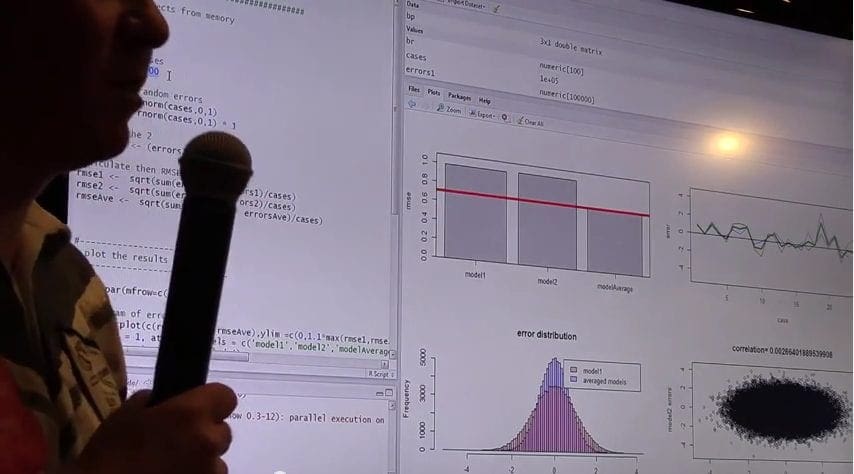
Image created by Author using Midjourney
Introduction
Imperfect data is the norm rather than the exception in machine learning. Comparably common is the binary class imbalance when the classes in a trained data remains majority/minority class, or is moderately skewed. Imbalanced data can undermine a machine learning model by producing model selection biases. Therefore in the interest of model performance and equitable representation, solving the problem of imbalanced data during training and evaluation is paramount.
This article will define imbalanced data, resampling strategies as solution, appropriate evaluation metrics, kinds of algorithmic approaches, and the utility of synthetic data and data augmentation to address this imbalance.
1. Understanding the Problem
The most important tip really is to understand the problem.
Imbalanced data refers to a scenario where the number of instances in one class is significantly higher than in others. This imbalance is, by nature, prevalent in various domains such as fraud detection, where fraudulent transactions are rare compared to legitimate ones, and rare disease prediction, where positive cases are few. In these cases, standard machine learning techniques might struggle, as they may tend to favor the majority class.
The impact of imbalanced data on machine learning models can be profound. Metrics like accuracy can become misleading, as a model predicting the majority class for all instances might still achieve high accuracy. For example, in a dataset with 95% non-fraudulent transactions and 5% fraudulent ones, a model that always predicts non-fraudulent will be 95% accurate, yet completely ineffective at detecting fraud. This scenario underscores the necessity of adopting techniques and metrics suited for imbalanced datasets.
Once we understand the problem, we can go on the offense against it.
2. Resampling Techniques
Resampling techniques are a popular approach to addressing the problem of imbalanced data. One approach is to undersample, which involves the reducing the number of instances from the majority class to bring the dataset into balance. This, unfortunately, is succeptible to information loss. Another approach is oversampling, which increases the number of minority instances in the data. Drawbacks of oversampling include the potential for overfitting.
Techniques such as SMOTE (Synthetic Minority Over-sampling Technique) can generate new synthetic instances by interpolating between existing examples. Each approach has its merits and drawbacks, with undersampling running the risk of information loss, and oversampling the possibility of overfitting. Practical implementation requires tuning and balancing of both methods to maximize effectiveness.
Here is a practical implementation of SMOTE in Python using the Imbalanced Learn library’s SMOTE module.
|
1 2 3 4 5 6 7 8 9 10 11 12 13 14 |
from imblearn.over_sampling import SMOTE from sklearn.datasets import make_classification from collections import Counter X, y = make_classification(n_samples=1000, n_features=20, n_informative=2, n_redundant=10, n_clusters_per_class=1, weights=[0.99], flip_y=0, random_state=1) print(f'Original dataset shape {Counter(y)}') sm = SMOTE(random_state=42) X_res, y_res = sm.fit_resample(X, y) print(f'Resampled dataset shape {Counter(y_res)}') |
You can find a full tutorial on using SMOTE here.
3. Choosing the Right Evaluation Metrics
When handling data where there is a class imbalance, care must be taken when choosing which evaluation metrics to use. Generally somewhat more informative than accuracy, in these cases, are precision, recall, the F1 score, and the AUC-ROC. Precision measures the fraction of correctly identified positive examples among all identified positives, while recall measures the fraction of correctly identified positive examples among all true positive examples.
The F1 score, the harmonic mean of precision and recall, succeeds in balancing the two. Lastly, the AUC-ROC (which stands for Area Under Curve Receiver Operator Characteristic, or commonly Area Under ROC Curve) characterizes a classifier’s performance across all classification thresholds and thus provides a comprehensive view of a classification model’s utility. Each evaluation type serves a function; for example, the emphasis placed on recall may be situated in a medical condition, for example, when it is imperative to identify every possible positive case, even if that results in more false positives.
Here is a code excerpt of how to calculate various metrics using Scikit-learn, after classification.
|
1 2 3 4 5 6 7 8 |
from sklearn.metrics import precision_score, recall_score, f1_score, roc_auc_score precision = precision_score(y_true, y_pred) recall = recall_score(y_true, y_pred) f1 = f1_score(y_true, y_pred) roc_auc = roc_auc_score(y_true, y_pred) print(f'Precision: {precision}, Recall: {recall}, F1-Score: {f1}, AUC-ROC: {roc_auc}') |
4. Using Algorithmic Approaches
Some algorithms are naturally good at tackling skewed data. Decision trees and ensemble methods such as Random Forest and Gradient Boosting can be adapted and leveraged to help with class imbalance through class weighting. These models are then able to allocate more weight to the minority class, which then increases their predictive accuracy.
Cost-sensitive learning is another technique that takes a data point’s misclassification cost into account, and thus trains the model to be bias towards reducing this. The aforementioned Imbalanced Learn is a library that supports cost-sensitive learning, and makes it easier to implement this to automatically weigh minority samples heavier during the training process
Here is an example of how to implement class weighting with Scikit-learn.
|
1 2 3 4 |
from sklearn.ensemble import RandomForestClassifier model = RandomForestClassifier(class_weight='balanced') model.fit(X_train, y_train) |
5. Leveraging Data Augmentation and Synthetic Data
Data augmentation is a technique commonly used in image processing in order to balance the class distribution in labeled datasets, though it does have its place in other machine learning tasks as well. It involves creation of new instances of the data by varying the existing data through transformations.
An alternative is the generation of new data entirely. Libraries like Augmentor for images and Imbalanced Learn for tabular data exist to help with this, employing synthetic example generation to ameliorate the problem of minority class underrepresentation.
Here is an implementation in Imbalanced Learn.
|
1 2 3 4 |
from imblearn.under_sampling import RandomUnderSampler undersample = RandomUnderSampler(sampling_strategy='majority') X_res, y_res = undersample.fit_resample(X, y) |
Summary
Addressing imbalanced data requires a holistic approach combining multiple strategies. Resampling techniques, appropriate evaluation metrics, algorithmic adjustments, and data augmentation all play vital roles in creating balanced datasets and improving model performance. The most important aspect of dealing with imblanaced data, however, is identifying and planning for it. Practitioners are encouraged to experiment with these techniques to find the best solution for their specific use case. By doing so, they can build more robust, fair, and accurate machine learning models.







No comments yet.